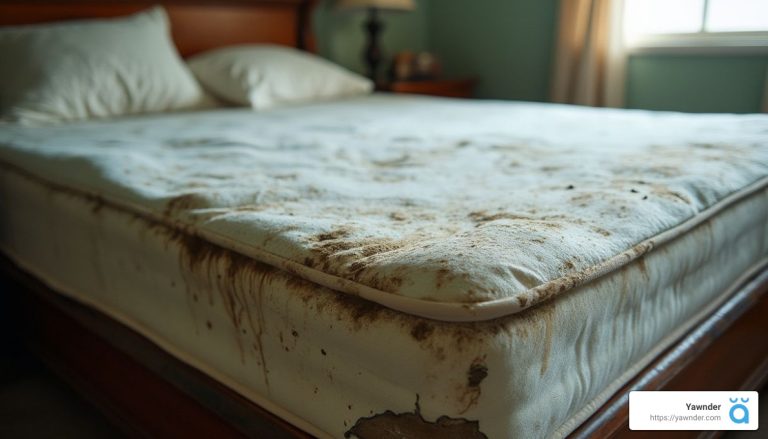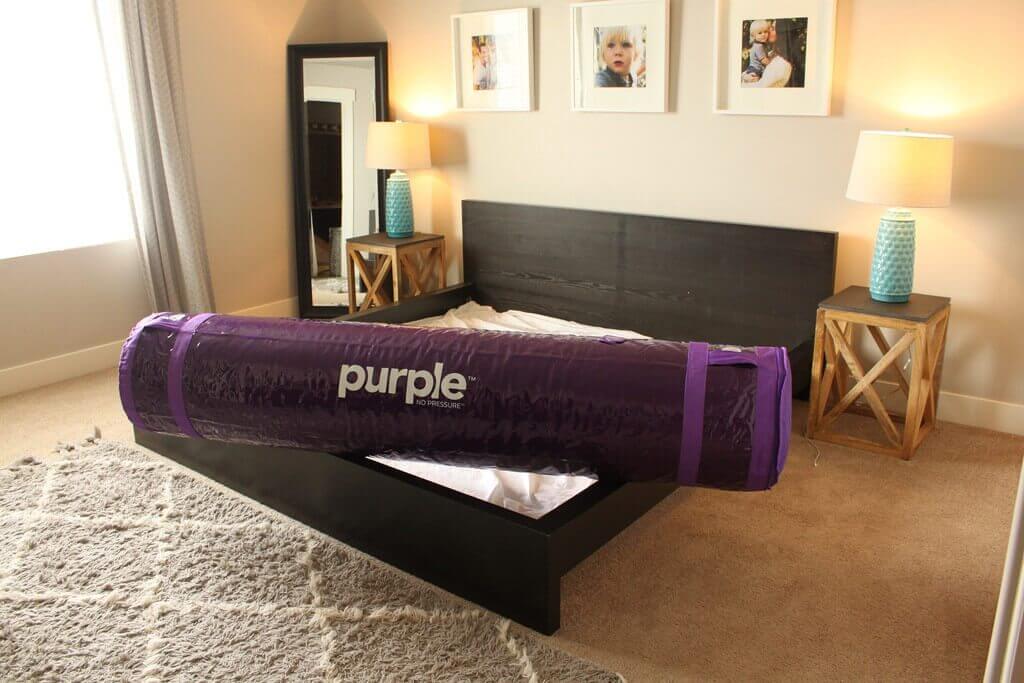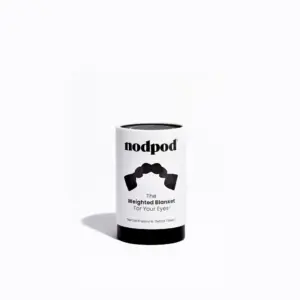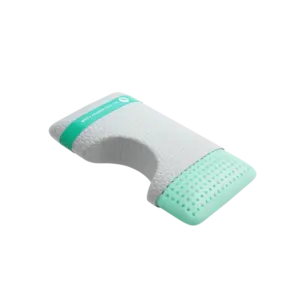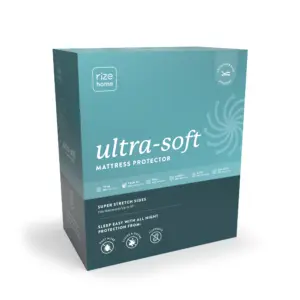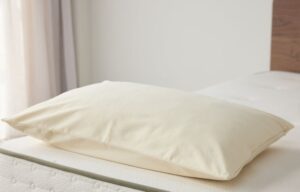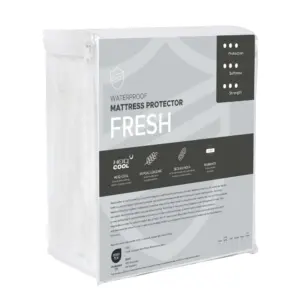One Simple Way to Dry Out a Water-Damaged Mattress
Can You Dry Out a Mattress That Has Water Damage?
If your mattress has suffered water damage, don’t despair! With prompt action and the right techniques, you can save it. Water damage can transform a once-cozy mattress into a damp and uncomfortable nightmare. Left unchecked, it can also lead to mold growth and persistent odors. It’s crucial to tackle the problem swiftly and effectively. In this guide, we’ll outline essential steps to successfully dry out a water-damaged mattress and maintain a healthy sleeping environment.
I’m Ben Trapskin, founder of Yawnder. My personal experiences with sleep challenges have fueled my passion for mattress care and improvement. Understanding how to effectively dry out a mattress that has water damage can dramatically enhance your sleeping situation, and I hope to share that knowledge with you.
Evaluate the Damage
The first step in addressing water damage is to assess the situation. Not all forms of water exposure are equal, and knowing the extent of the damage is key.
Check for Mold Signs
Begin by inspecting the mattress for any visible mold or mildew. A musty smell can be a warning sign that mold is beginning to take hold. Mold can grow alarmingly fast, often within 24 to 48 hours, so swift action is paramount.
Assess Water Exposure
Determine how much water the mattress has absorbed. A small spill from a drink is quite different from a mattress affected by flooding or heavy rain. Also, consider the type of water involved—clean water, like rain, poses less risk than contaminated water, which could harbor bacteria and toxins.
Consider Professional Assessment
If your mattress is valuable or appears extensively damaged, consulting a professional cleaning service might be worthwhile. Experts have the tools and knowledge to evaluate the situation accurately and may offer solutions to rescue your mattress.
Remove Excess Moisture
Once you’ve evaluated the damage, it’s time to take action right away to remove excess moisture. Swiftly addressing this step can significantly decrease the chances of mold growth.
Use Towels
Start by blotting wet areas with clean, dry towels. Press firmly on the surface to soak up as much water as possible. Replace the damp towels with dry ones as needed, continuing until you have absorbed a significant amount of moisture.
Wet-Dry Vacuum
If you have access to a wet-dry vacuum, it can be an invaluable tool for extracting moisture from deep within the mattress layers. This step can greatly reduce overall drying time.
Baking Soda
Sprinkle a generous amount of baking soda over the damp areas of the mattress. Baking soda is a natural moisture absorber and will also help neutralize any odors. Allow it to sit for several hours before vacuuming it off to maximize its effect.
By thoroughly removing excess moisture, you are well on your way to drying out a water-damaged mattress and preventing further deterioration.
Steps to Dry a Water-Damaged Mattress
Once you have evaluated the damage and removed excess moisture, it’s crucial to ensure the mattress is thoroughly dried.
Avoid Heat Sources
Although it might be tempting to use heat for quick drying, this is often detrimental to the mattress materials, particularly foam, which can warp or distort.
Sunlight Caution
While sunlight can provide natural sanitization, prolonged direct exposure can harm your mattress’ materials. If you choose to use sunlight as a drying option, do so cautiously and limit the exposure time to avoid warping or discoloration.
Air Drying
Prioritize air drying with the assistance of fans to circulate air around the mattress. This gentle approach helps maintain the mattress’s integrity and shape while effectively reducing moisture levels.
Dehumidifier
Using a dehumidifier can significantly accelerate the drying process by extracting moisture from the air. This method is especially effective in humid environments where traditional airflow may not suffice.
Lift the Mattress
For efficient drying, ensuring adequate airflow is essential. Elevating the mattress can drastically improve circulation and minimize the risk of mold development.
Support Blocks
Elevate the mattress using sturdy items like wooden or cinder blocks. This allows air to circulate underneath and aids the overall drying process.
Airflow and Mold Prevention
Keeping the mattress elevated decreases the likelihood of mold growth on the underside. Mold thrives in moist, stagnant conditions, so maintaining good airflow is critical.
Prevent Mold and Mildew
Once you have successfully dried your water-damaged mattress, it’s important to follow preventive measures against mold and mildew.
Rubbing Alcohol Solution
One effective strategy is to create a rubbing alcohol solution. Combine equal parts rubbing alcohol and water. Use a clean cloth to apply this mixture, gently wiping the entire surface of the mattress. This not only disinfects but also helps deter mold growth.
Dry Completely
Ensure that the mattress is thoroughly dried after applying any solutions. Mold flourishes in moisture, so complete drying is non-negotiable.
Air Purifier with HEPA Filters
Investing in an air purifier equipped with HEPA filters can greatly reduce mold and mildew risk. HEPA filters are designed to capture microscopic particles, including mold spores, and improve the overall air quality in your sleeping space.
Frequently Asked Questions about Drying a Mattress
Can a Water-Damaged Mattress Be Saved?
Yes, but it’s crucial to act quickly. If mold develops, recovery may be challenging. Professional cleaning services can help restore severely damaged mattresses, but replacement is often more practical for old or extensively soaked ones.
How Long Does It Take to Dry a Mattress?
Generally, drying a mattress takes between 24 to 48 hours, depending on water exposure and drying conditions. Enhanced air circulation, aided by fans, can considerably speed up this process.
Is a Mattress Ruined If It Gets Wet?
Not necessarily. Assess the mattress for structural damage, mold signs, and overall condition to determine if it’s worth saving. If conditions are right and prompt action is taken, you may successfully salvage the mattress.
Conclusion
Ensuring a clean and healthy sleep environment is paramount, especially when your mattress encounters water damage. While it is indeed possible to dry out a mattress that has sustained damage, success relies on quick and careful action. By following these guidelines and utilizing the resources available, such as those provided by Yawnder, you can effectively restore your mattress to its former glory.
A well-maintained mattress not only lasts longer but also contributes significantly to more restful sleep. Whether through drying techniques or professional assistance, your mattress care can make all the difference in achieving a healthier sleep environment.



